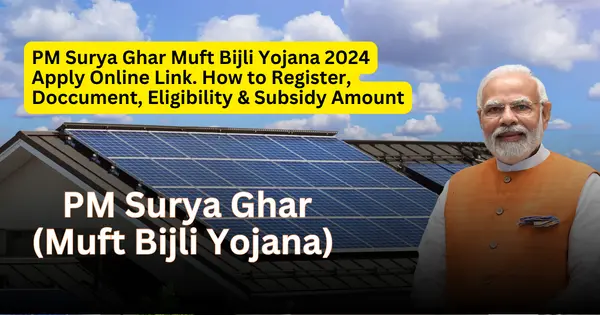Switching to solar energy isn’t just an environmentally responsible choice—it’s also a smart financial move, thanks to the many incentives offered by governments worldwide. Subsidies, tax benefits, and other financial programs make it more affordable than ever to invest in solar power. In this blog, we’ll break down the various government incentives available and show you how you can save big while embracing clean energy.


1. Solar Subsidies: Lower Your Upfront Costs
Governments often provide subsidies to reduce the initial cost of solar panel installation. These programs aim to encourage wider adoption of renewable energy.
Key Features of Solar Subsidies:
- Direct Grants: A portion of the installation cost is reimbursed by the government.
- Reduced Capital Costs: Subsidies can cover up to 30-70% of installation expenses, depending on your location and the system type.
- Eligibility: Subsidies are typically available for residential, commercial, and agricultural installations.
For example, in India, the Ministry of New and Renewable Energy (MNRE) offers subsidies for residential rooftop solar systems, significantly lowering upfront costs for homeowners.
2. Tax Credits: Reduce Your Tax Liability
Solar tax credits allow you to deduct a portion of your solar installation costs from your federal or state income taxes.
Types of Tax Credits:
- Federal Tax Credits: In countries like the United States, the Investment Tax Credit (ITC) allows you to claim 30% of your solar installation costs as a tax deduction.
- State-Level Credits: Some regions offer additional tax credits, which can further reduce your tax burden.
Example: If your solar installation costs $15,000 and you qualify for a 30% federal tax credit, you can deduct $4,500 from your taxes, bringing your net cost down to $10,500.
3. Net Metering: Earn Credits for Excess Energy
Net metering is a policy that allows solar energy system owners to earn credits for the excess electricity their systems generate. This program ensures that no energy goes to waste and maximizes the financial benefits of going solar.
How Net Metering Works:
- Feed-In Tariffs: Excess electricity generated by your solar panels is sent back to the grid.
- Energy Credits: You receive credits for this surplus, which can be applied to future energy bills.
- Annual Savings: Homeowners can significantly reduce their energy costs by offsetting grid electricity consumption.
Net metering is especially beneficial in areas with high electricity rates, allowing you to save more over the years.
4. Loan and Financing Programs: Make Solar Affordable
Many governments offer low-interest loans or financing schemes to make solar installations more accessible.
Types of Solar Financing:
- Green Loans: Special loans with low interest rates for renewable energy projects.
- Solar Leasing: Install solar panels with little or no upfront cost and pay a monthly lease.
- Power Purchase Agreements (PPAs): Buy solar-generated power at a reduced rate instead of purchasing the system outright.
These programs are ideal for those who want to reap the benefits of solar energy without a significant initial investment.
5. Renewable Energy Certificates (RECs)
Renewable Energy Certificates are tradable commodities that certify you’re generating renewable energy. Governments or utilities may provide financial rewards for producing green energy through RECs.
Benefits of RECs:
- Earn revenue by selling RECs to companies aiming to meet renewable energy targets.
- Offset your carbon footprint while gaining financial returns.
6. Accelerated Depreciation for Businesses
For commercial solar installations, many governments allow accelerated depreciation of solar assets.
What This Means for Businesses:
- Depreciate the value of your solar system faster, reducing taxable income.
- Achieve higher savings in the initial years after installation.
In India, businesses can claim up to 40% accelerated depreciation on solar systems, making it an attractive option for enterprises.
7. Local and State-Level Incentives
Apart from federal incentives, many states, provinces, and local governments offer additional programs. These may include:
- State-Specific Rebates: Further reduce installation costs.
- Property Tax Exemptions: Solar installations may not increase your property tax liability.
- Sales Tax Exemptions: Purchase solar equipment without paying sales tax.
Be sure to research local incentives, as they can vary widely based on your location.
8. Special Incentives for Farmers and Rural Areas
Governments often provide additional support for agricultural and rural solar projects. These incentives may include:
- Solar Water Pumps: Subsidized systems to help farmers reduce irrigation costs.
- Rural Electrification Programs: Grants for off-grid solar installations in remote areas.
For example, in India, farmers can avail of subsidies of up to 90% for solar water pumps under the PM-KUSUM scheme.
Why Now Is the Best Time to Invest in Solar
Government incentives are a limited-time opportunity. As solar adoption increases, many programs may phase out or reduce benefits. Acting now ensures you can take full advantage of the subsidies, tax benefits, and rebates available.
Conclusion: Save Big, Go Solar
Government incentives make solar energy more accessible and affordable than ever. From upfront subsidies to long-term tax benefits, these programs ensure that going solar is a smart financial decision.
If you’re ready to save big and embrace clean energy, Thangam Energy Solutions Private Limited is here to help! Contact us today to learn more about the solar incentives you’re eligible for and start your journey toward a sustainable future.
